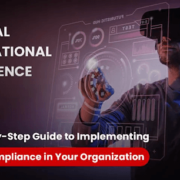Customers are the essence of running a business. You can’t sell services or products if no one is willing to pay for them. Their numbers will dictate the terms of your progress, but the relationship you have with them is just as important. Thinking in terms of quantity is just one side of the coin, and there are many guides available that can effectively teach you how to attract new customers. And while this is a crucial aspect for new businesses, once things get going you quickly realize that great success comes exclusively with customer satisfaction and retainment.
In a sense, by focusing on retaining your customers and keeping them satisfied, you will be allowing for two scenarios which will increase your marketing potential. Primarily, a happy customer is more likely to share their experience with others and will be more willing to recommend your products or services if their needs were heard, met, and answered to. Word of mouth is a powerful marketing phenomenon, which in the long term builds a great reputation for you and your company. Secondly, acquiring new customers will cost you a whole lot more than working on retaining your current clientele. Of course, this doesn’t mean you should neglect trying to engage new customers altogether but rather use customer retention as a foundation on which you will be able to pursue and establish new business connections.
Customer Appreciation: Building Strong Relationships with Your Customers
One of the best ways of increasing customer satisfaction and retention is to incorporate a customer appreciation strategy to your business. Customer appreciation is essentially a matter of showing gratitude and rewarding your customers, in hopes of building long-lasting quality relationships with them. These gestures of affection do not have to be extravagant and are often relying more on creativity than anything else. The whole point is to establish a personal connection and going the extra mile for those who are willing to do business with you.
The primary goal is to show your customers you care about them and their satisfaction. If executed correctly it will contribute to building a strong relationship, a bond, expressed as long-term loyalty which will benefit both the company and the customer. However, there is always the possibility of things going sideways if you are not honest with your customers. No one likes being manipulated, and that is exactly how your actions will be interpreted if you fail to take into account your customer’s needs, desires, and interests. To avoid this, you should try and get to know them as close as you can by either interacting with them directly or by extrapolating, deducing and recognizing patterns in the available data about them and their behavior.
What to Do vs. What Not to Do
Each customer appreciation strategy should be more or less unique and in tune with your company’s mission and vision. Over the years, some things have shown to be better than others, and you can check out some common ways of showing customer appreciation here! You can also get as creative as you like, but remember to follow these general tips in terms of what you should and shouldn’t do.
- Be Attentive – Don’t Stalk Your Customers!
There are numerous ways of getting information about your customers. Each interaction can provide you with enough hints about their beliefs and values. Try to think of it as if you’re planning to surprise them for their birthday and you’re looking for clues about what they might like. This should get you in the right mindset, only you’ll probably be surprising a group, rather than just one person.
Another great way of acquiring information is through social media. It is a well-established marketing research technique, but you’ll need to make decisions based on patterns in the behavior and interests of your customers as a group. If you plan to show customer appreciation by using information that people haven’t disclaimed directly to you, they will find it intrusive and it will produce a counter-effect.
- Offer Something They Need – Don’t Send Them Junk!
Gifts should be tokens of appreciation and a celebration of a bond between two sides. And when a company is gifting something to its customers, people are bound to have some reservations. We’ve all been in a situation when we’ve asked: “What’s the catch?” Free things often aren’t really free, and people tend to be suspicious because they want to avoid getting duped. That’s why these sorts of gifts are often are held to a higher standard.
In order to avoid a situation where people are misinterpreting your attempts at customer appreciation for heartless spewing out of marketing material, make sure that you’re giving out something they’ll actually look forward to. Something that will resonate with their values and remind them why they became your customer in the first place.
- Award Loyalty – Don’t Try to Buy It!
It’s important to differentiate between rewarding loyal behavior and trying to induce it. True loyalty is not based on bribes, but on making a deep connection with your customer. It might seem like it’s working in the short term, but that doesn’t mean they’ll stick with you if a better deal comes their way. And remember, loyalty is a two-way street. Nothing will make your customers leave you quicker if they think that you don’t have their back.
- Praise Them Publicly – Don’t Forget to Ask for Consent!
Your customers all have a voice and you need to recognize those whose message needs to be heard. Their stories are often inspiring and you can provide them with the medium for sharing it. Blogging, vlogging, interviewing, quoting… Some methods will definitely be more suitable for your business than others. Whatever you do, make sure you ask for consent. Not everyone enjoys being in the spotlight and you need to respect your customer’s wishes.
- Stay In Touch – Don’t Be a Bore!
Contacting your customers every now and then can be beneficial but you’ll need to figure out the right message for the right person. Some type of personalization is a must, whether you’re just checking in or offering something tangible.
And you need to realize when to let things go. If a customer is not responding to your messages, try to learn from it and move on. Sending follow-up after follow-up will only make you look desperate, irritating, and in some cases, you might end up getting blocked which is a good indication that you’re definitely doing something wrong.
AuthorBio: Mark is a biz-dev hero at Invoicebus – a simple invoicing service that gets your invoices paid faster. He passionately blogs on topics that help small biz owners succeed in their business. He is also a lifelong learner who practices mindfulness and enjoys long walks in nature more than anything else.



















